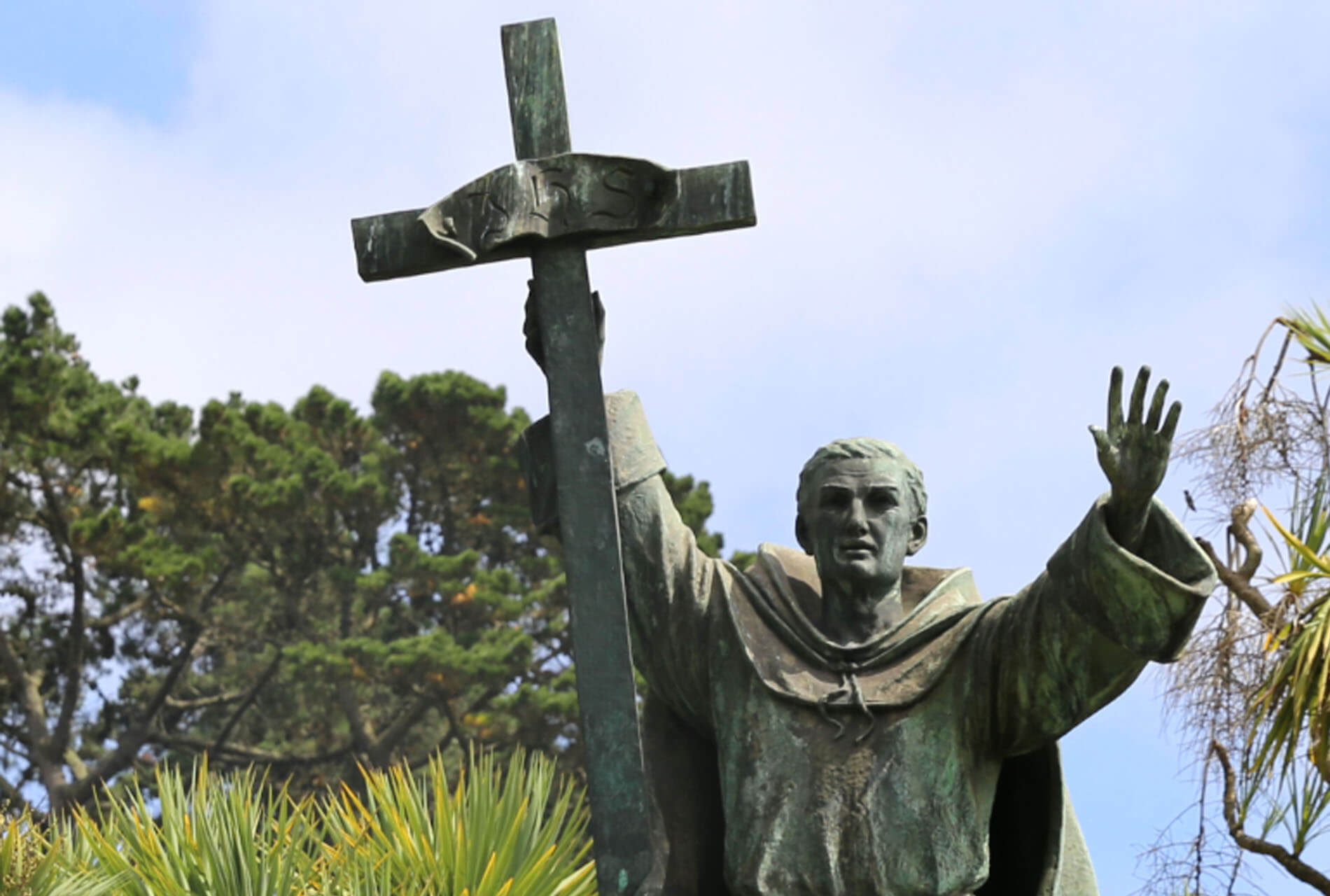By George Webber | For The Sun
The first mass of the brand-new Franciscan Catholic Mission San Francisco de Solano occurred out by the present-day Cline Winery on July 4, 1823. During this 200th Anniversary year, what might a 200th event focusing on the Sonoma Mission look like?
After nine months of study on a possible 200th event, California State Parks punted completely, stating that: “We have determined that a commemoration may not be an appropriate way to mark this anniversary.” This statement is an acknowledgment of how public perception of the missions in California has changed amid charges that California missions were guilty of slavery and genocide.
Indeed, the Franciscan missions in California were controversial from the start. As early as 1780, California Governor Felipe de Neve criticized California missions, describing “the Indians’ fate as worse than that of slaves.” Six years later, the French navigator Jean Francois de la Perouse wrote after visiting the San Carlos Mission: “It brought to our recollection a slave plantation at St. Domingo, or any other West-India island. We have seen both men and women in irons, and others in the stocks; and often we heard the noise of the whip.”
In 1806, the Russian official Nicolay Rezanov reported: “The missionaries in California have completely enslaved their neophytes. The fate of these so-called Christian Indians is not preferable even to that of negro slaves.”
In 1821, the Mexican nation was born after an 11-year revolution against Spain, and the new government became responsible for managing California and its missions. Mission administrators were ordered by the new civilian authorities to stop their use of the whip on neophytes – who were now officially Mexican citizens. But the whip never went away.
In 1823, an ambitious Franciscan priest named Father Jose Altimira founded a new mission in Sonoma: San Francisco de Solano. At a time when the use of the whip was still widespread at the missions in California, Father Altimira stood out for his constant and enthusiastic use of this tool of command and control.
Russian visitor Zakahar Tchitchinoff noticed the tense atmosphere at the Sonoma mission, and wrote: “Both the priests and the soldiers beat the Indians when they don’t move fast enough obeying an order. ” In 1826 the Sonoma Mission neophytes revolted, burned down half the buildings, and Father Jose Altimira was forced to flee for his life. He was replaced by Father Buenaventura Fortuni, who appears to have been a kinder sort of administrator, and for three years morale at the Sonoma Mission improved.
But in 1830 Father Fortuni retired, and the new person in charge was Father José Gutierrez, a Franciscan priest from South America. Whipping for both adults and children neophytes intensified. General Mariano Vallejo, who was living at the Presidio in San Francisco in May of 1833, wrote to Governor Figueroa of the continued harsh treatment, saying: “These poor Indians are being abused with dire results. Their treatment would horrify the most feral man.” Governor Figueroa sent a letter to Father Gutierrez in Sonoma, ordering him to stop the ill-treatment of neophytes, who were, after all, Mexican citizens!
And here is a letter written in response by Father Gutierrez to Governor Figueroa:
“Governor Figueroa, I acknowledge receipt of your letter, and ask you to reconsider the complete banning of whipping, which I have done rarely and in moderation. No matter how much I implore my neophytes to obey the strictures of the church, they continue to miss mass, don’t go to work, and flee the mission often for weeks at a time. If we stop the lashings, what punishment would you use for these sinners? Would it be enough punishment to give them a strong lecture? I know for a fact that is useless; afterwards they mock the priest and go back to their bad ways”
It’s damning stuff. And history is rife with it. Two hundred years later, this might have been an occasion to examine how and why this kind of inhumanity could be tolerated, and even encouraged. But as State Parks declared, “A commemoration may not be appropriate at this time.” If not now, when?






When? When the Europeans ‘commemorate’ Aushwitz, Birchanau, etc etc. How about never?